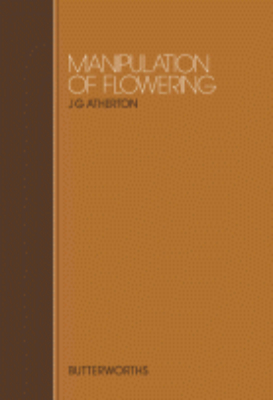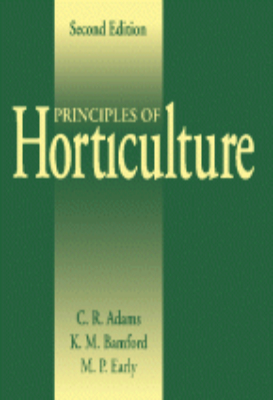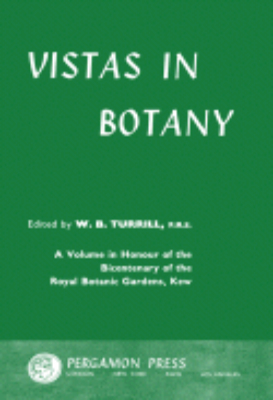E-Resources
Manipulation of Flowering
Manipulation of Flowering presents the edited proceedings of the 45th University of Nottingham Easter School in Agricultural Science held at Sutton Bonington in England on April 7-10, 1986. This book is organized into eight sections. The first main section examines the measurement and prediction of flowering and analyzes how best to measure flowering when the aim is either to assist physiological interpretations or construct predictive models. The following sections explore juvenility, the nature of determination in meristems, vernalization, photoperiodic induction and flower evocation, and initiation and development to anthesis. Each of the main sections provides an analysis of the flowering problems and a critical view of how to achieve a better understanding and use of the physiology of flowering. This book will be of interest to crop researchers, plant physiologists, geneticists, and others interested in understanding flowering manipulation.
Physiology of Woody Plants: 1979
Physiology of Woody Plants explains how physiological processes are involved in growth of woody plants and how they are affected by the environment, including the mechanisms of the processes themselves. Organized into 17 chapters, this book discusses the role of plant physiology, as well as the form and structure of woody plant. It also explores the nature and periodicity of shoot, cambial, root, and reproductive growth of trees of the temperate and tropical zones. Other topics elucidated are the process of photosynthesis and respiration, the various substances found in woody plants, plant nutrition, and factors affecting plant growth. This book will be valuable as a text to students and teachers and as a reference to investigators and others who desire a better understanding of how woody plants grow.
Physiology of Woody Plants: Second Edition 1997
This completely revised classic volume is an up-to-date synthesis of the intensive research devoted to woody plants. Intended primarily as a text for students and a reference for researchers, this interdisciplinary book should be useful to a broad range of scientists from agroforesters, agronomists, and arborists to plant pathologists, ecophysiologists, and soil scientists. Anyone interested in plant physiology will find this text invaluable.
Practical Botany
Practical Botany for Advanced Level and Intermediate Students, Fifth Edition is a five-part laboratory manual covering the syllabuses in Botany of the advanced level students and other examinations of similar standard. This laboratory manual must be used in conjunction with textbooks of botany. The Introduction presents general instructions for practical work and for the keeping of practical notebooks and a list of apparatus and instruments required, as well as a summary of the characteristics of living organisms, the differences between plants and animals and the principles of plant classification. Part I describes the features and methods of use of the microscope, while Part II contains intensive discussions on the evaluation of the morphological, cytological, and histological aspects of plants. The remaining parts cover the biochemical, physiological, and genetic aspects of the plant experiments. This book is directed toward advanced and intermediate level botany teachers and students.
Principles of Horticulture
Principles of Horticulture, Second Edition covers the various topics concerning plant cultivation for agricultural use. The book is comprised of 17 chapters that tackle the various areas of concerns in horticulture. The coverage of the text includes the nurturing aspects of horticulture, including growth and development, genetics and breeding, and nutrition. The book also covers the various threats and problems encountered by horticulturists, such as pests, weeds, and harmful microorganisms. The text will be of great use to researchers and practitioners of plant-related fields, such as botany, agriculture, and particularly horticulture.
Tropical Plant Types
Tropical Plant Types is a textbook dealing with bacteria and flowering plants of the tropics. It can be used along with books in tropical biology. The book first examines the simpler plant types known as unicellular or those consisting of a thallus. These organisms are the algae, fungi, lichens, bacteria, and some viruses. The text then describes the Bryophyta, the Pteridophyta, and the Spermatophyta. Compared to the others, the Spermatophyta or seed plants grow in wider range of territories and are the dominant land flora. The book then discusses the morphology of the Spermatophyta and their successful characteristics of survival. The book also analyzes the different plant parts, such as the root, the stem, the leaf, and the flower. A couple of chapters discuss pollination, fertilization, and the dispersal of seeds and fruits. The book then gives examples of tropical flower types, with some details on their distribution and morphology. The text also discusses perennial flowering plants, vegetation types, and plant communities found in tropical rain forests, in monsoon forests, and in the drier regions of the earth. The selection can serve as a textbook for pupils nearing the completion of their secondary education, freshmen university students, and for those who need to meet the requirements of the Cambridge Overseas Advanced Level Biology Examination.
Vistas in Botany
Vistas in Botany features the study of life histories of plants, their development from spore or seed through vegetative phases up to the diverse phenomena of reproduction needs. This book is a compilation of studies and research conducted by several botanists that discuss topics such as the taxonomy general principles and Angiosperms; plant biochemistry; causal plant ecology; plant geography; cytology; genes, chromosomes, and evolution; viruses; bacteria; fungi; Bryophyta; Pteridophyta; Gymnospermae; and plant physiology. This publication is valuable to botanical specialists who wish to obtain updated knowledge in botany or phytology, and to students conducting research on the science of plant life.







